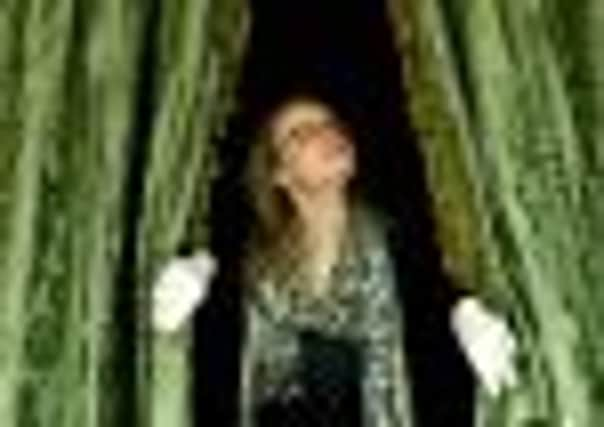Harewood House: Stately progress


It hasn’t escaped notice that there have been many changes afoot at Harewood House in the past year and into this environment of tangible change and progress entered Victoria Stubbs.
She has been the house manager here since July and we meet before the start of the new season in Lord Harewood’s sitting room, the room on the State Floor that perhaps most expresses the tastes of the current Earl and Countess.
Advertisement
Hide AdAdvertisement
Hide AdIt’s filled with modern artworks from their collection, including work by Henry Moore, Picasso and Jacob Epstein.
At this point the room was bare, all decoration removed, wallpaper stripped back to the render as it stood ready to receive a thorough renovation. A single strip of floral wallpaper was draped over scaffolding.
“It came off very easily,” says Victoria, who approached this restoration in a very hands-on way, embracing the practical areas of her job.
Her previous job was at Chartwell, the family home of Sir Winston Churchill where, she says, “I wouldn’t have had the opportunity to be so hands on. In National Trust properties, it is more usual to get contractors in. Here at Harewood there is a team of people who are really passionate about the place who just roll up their sleeves and get on with the job.”
Advertisement
Hide AdAdvertisement
Hide AdFor Victoria this meant that on just her second day at Harewood she found herself taking Princess Mary’s fragile wedding dress from its case and packing it up to send to Doddington Hall for an exhibition.
“The dress is very delicate and it was a huge responsibility,” says Victoria, with no small amount of satisfaction and clearly relishing the challenge.
Anna Robinson, the head of house and collections at Harewood House, says this ability to take challenges in her stride is what got Victoria the job.
“In her interview, Victoria said that she could hit the ground running, which is just what we wanted,” says Anna. “You really have to be a good all-rounder in this job. It involves elements of hospitality, dealing with film crews, and also managing the collection, budgets and visitors simultaneously.”
Advertisement
Hide AdAdvertisement
Hide AdVictoria is no shrinking violet, that’s for certain. An early student experience as a volunteer at a National Trust property gave her the stately home bug. “I did everything from dressing up as the Lady of the House to looking after the collections and welcoming visitors.”
Since then, Victoria taken an MA in Early Modern History and a postgraduate diploma in Museum Studies and has spent eight years working in National Trust properties in Kent and Surrey.
So what is it that really inspires Victoria about Harewood? “One of the areas that very much interests me is that it’s a family home. At Chartwell we tried to maintain the idea of the house being just that, although no-one actually lives there.
“At Harewood, the flowers in the rooms, the plumped-up cushions and so on are quite authentic.
Advertisement
Hide AdAdvertisement
Hide Ad“It’s really nice to be able to work with the family and have their input. For example in the restoration of Lord Harewood’s Sitting Room, Lady Harewood was closely involved in selecting the colours used in the final scheme.”
It’s durring the period when the house is closed to the public that Victoria can really come into her own, with restoration projects, archiving and assessing the fabric of the building.
Earlier this year she conducted a full ceiling survey. This involves hours lying on scaffolding and meticulously checking each centimetre of ceiling. Perhaps not everyone’s idea of fun, but a challenge that Victoria clearly enjoys. “I’m good at attention to detail,” she laughs. “I make lots of lists and notes!”
She brings with her a slightly different approach, too. “When the house isn’t open, the list of things we have to do is vast. For example, just to clean one chandelier takes two people a week.”
Advertisement
Hide AdAdvertisement
Hide AdThis month she and the house technician will take down the chandelier in the Cinnamon Drawing Room, remove the wiring and wash every single piece of crystal in de-ionised water.
Victoria brings with her loads of experience, knowledge, energy and a fresh approach.
“Harewood is a living, breathing family home,” she says. “People here are open to new ideas – it’s not about preserving the place in aspic.”
Harewood’s major 2011 exhibition, “Finding Adam”, celebrating the work of Sir Jacob Epstein, runs to the end of July. For more information, visit www.harewood.org or call the box office on 0113 2181000.
Through the ages
Advertisement
Hide AdAdvertisement
Hide AdAt the time of the Domesday Book in 1066, Harewood was owned by three Saxon chieftains, Tor, Sprot and Grim.
The 3rd Earl of Harewood, Henry and his wife Louisa made many significant changes to the house during the Victorian period to accommodate their 13 children.
Between 1914 and 1918, Harewood House served as a convalescent hospital.
The estate’s Eucryphia Tree was planted in the late 1930s and is reputed to be the largest in the North of England.
Advertisement
Hide AdAdvertisement
Hide AdHenry Lascelles, who made the fortune with which his son Edwin built the House, died mysteriously – probably by committing suicide – in 1753.
The 4th Earl of Harewood kept a pet hippopotamus in the Lake.